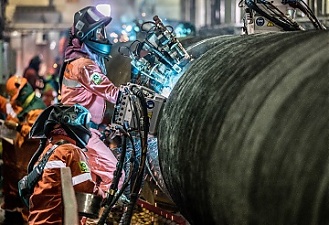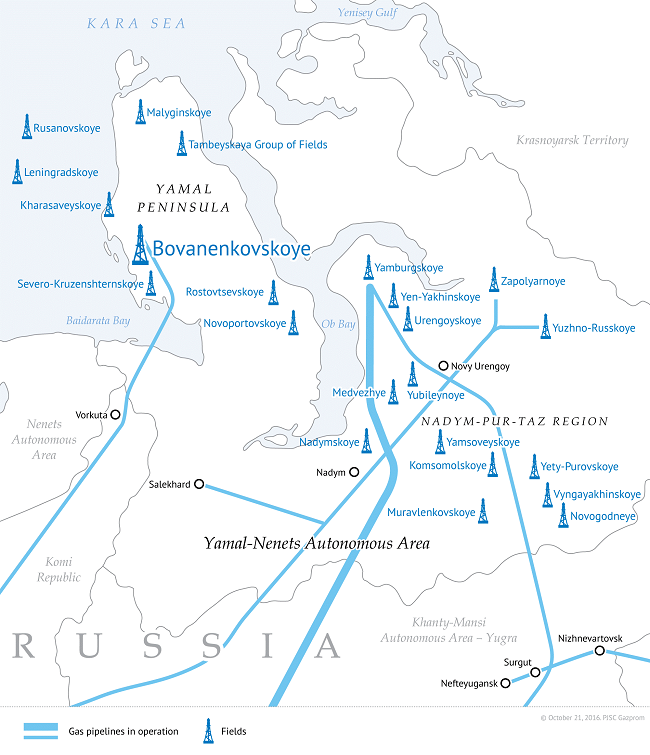Construction, EU – Baltic States, Gas, Good for Business, Russia, Technology
International Internet Magazine. Baltic States news & analytics
Saturday, 27.04.2024, 03:51
Nord Stream 2 has laid 250 kilometres of pipeline
 Print version
Print version |
|---|
| Welding operations on board offshore installation barge C10. Welders connect pipe joints on board offshore installation barge Castoro Dieci (C10) during operations in Germany’s Bay of Greifswald. Press foto. |
Around 30 other vessels are still operating in the Baltic Sea around the clock to guarantee the timely completion of the pipeline. The pipelay vessels Audacia and Solitaire operated by the Allseas Group are continuing to lay pipe in German and Finnish waters respectively. By mid-November, some 250 km of pipeline had already been laid.
All 200,000 steel pipes required for the twin pipelines have been delivered from the pipe mills to the two coating plants, and concrete weight coating is also progressing as planned: 74 percent of the pipes have already been coated in the logistics hubs in Mukran, Germany, and Kotka, Finland, and are being delivered to the pipelay vessels around the clock.
Modern Link
Nord Stream 2 has prepared dossier explaining why Nord Stream 2 is not only an important gas supply line for European customers but also ties into a larger gas corridor.
Once completed, Nord Stream 2 will link the Russian Northern Gas Corridor to Europe. Russia has been developing this corridor for the past decade to meet new demand for gas in Northwest Russia as well as abroad. It starts at the gas production fields on the Yamal peninsula in Northern Siberia and feeds into several industrial and export projects in the region of Moscow and St. Petersburg, e.g. for the domestic chemical industry, the residential sector and gas liquefaction plants for LNG export, as well as Nord Stream 2.

Vast reserves of gas are being developed in the Yamal peninsula, which holds more than double the volume of US total reserves, for additional production to meet the higher domestic consumption in Northwest Russia and the increasing international demand.
With the Northern Gas corridor Europe will not only benefit from long term security of supply originating in the world’s largest reserves, international consumers in Northwest Europe will capitalize on the new route to Europe being around 2,000 km shorter than the existing transit systems. It also operates at a higher pressure than other corridors, resulting in lower transportation costs and lower emissions. In 2017 existing routes to Europe from Russia (via Nord Stream, Poland and Ukraine) were already operating at or near full capacity with flows of 174 bcm. However, European demand for imports is increasing, both as demand has grown for each of the last three years, and as EU production declines. According to energy experts from IHS Markit, the Northern Corridor provides up to 4.5 times more fuel- and cost-efficient transport for these additional production volumes.
Most
of the infrastructure of the corridor is already in operation, and we are
excited about the progress that we are making with Nord Stream 2 as one of its
final links to provide secure and sustainable energy for Europe.








 «The Baltic Course» Is Sold and Stays in Business!
«The Baltic Course» Is Sold and Stays in Business!

